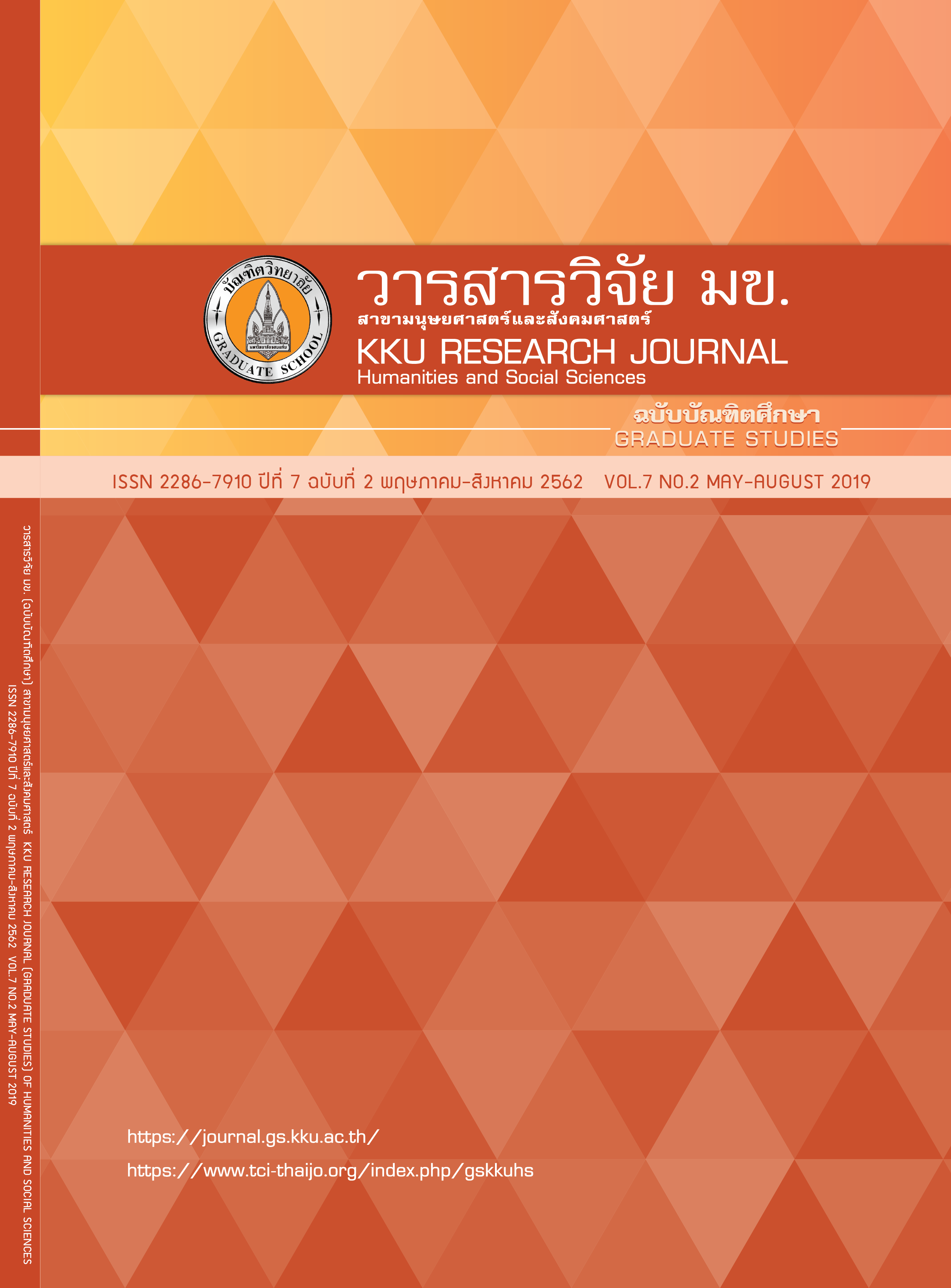A Study of the Indicators and Criteria for the Performance Appraisal of The Government Employees at the Provincial Statistical Office
Keywords:
Indicator, Criteria, Performance appraisalAbstract
This study aimed to determine the indicators of the performance appraisal for government employees at the Provincial Statistical Office and examine the quality of indicators and the criteria for the performance appraisal for government employees at the Provincial Statistical Office. There were two groups of the subjects in the study. One was to determine the indicators used stratified random sampling consisting of sample of 313 government officers and government employees. The other was to examine the quality of indicators and the criteria used purposive sampling consisting of 14 experts. The criteria to examine the work performance among government employees were reviewed by the experienced. There were 2 sets of the instrument: (1) the questionnaire to determine the indicators, and (2) the questionnaire to evaluation the propriety and feasibility of the indicators and the criteria. The criteria to determine the indicators were at the mean of 3.51 or above. The criteria to examine the quality of indicators and the criteria were at the mean of 3.51 or above. The criteria to examine the quality of indicators and the criteria were at the mean of 3.51 or above. The finding of the study suggested 45 indicators divided into 3 components: 31 indicators of the performance, 7 indicators of the behavior / competency, and 7 indicators of the personal traits.
References
The Performance of Performance Standards (p. 203). Michigan: National Bureau of
Economic Research. 2011.
2. Khoungsimma Pornweenus. A Needs Assessment for the Development of
a Performance Appraisal System for Government Employees at the Provincial
Statistical Office. Educational Research and Evaluation Faculty of Education
Mahasarakham University (Unpublished manuscript). 2017.
3. Maharatsakun Prawet. Performance Appraisal & Merit Increases.
Bangkok: Wittaya Paiboon Printing. 2010.
4. Armstrong M. Performance Management: Key Strategies and Practical
Guidelines (3rd ed.). London: Kogan Page. 2006.
5. Diane A. Performance Appraisals: Strategies for Success.
New York: American Management Association. 2008.
6. National Statistical Office. Strategic Plan for Human Resource Management,
National Statistical Office, Annual Budget 2014 - 2017. s.l. : s.n. 2015.
7. Krejcie RV, Morgan DW. Determining sample size for research activities.
Educational and Psychological Measurement, 30(3), 607–610. 1970.
8. Lussie RN, Hendon JR. Human Resource Management: Functions,
Applications, and Skill Development. Washington, D.C.: Sage. 2012.
9. Gomez-Mejia LR, Balkin DB, Cardy RL. Managing human resources
(7th ed.). New Jersey: Prentice Hall. 2012.
10. Mathis RL, Jackson J. Human resource management (13th ed.).
Mason, OH: South-Western Cengage Learning. 2010.
11. Noe RA, Hollenbeck JR, Gerhart B, Wright PM. Fundamentals of human
resource management (4th ed.). New York: McGraw-Hill/Irwin. 2012.
12. Mondy RWD, Martocchio JJ. Human resource management (12th ed.).
New Jersey: Prentice Hall. 2012.
13. Cascio WF. Managing Human Resources: Productivity, Quality of Work Life,
Profits (3rd ed.). New York: McGraw-Hill Education. 2013.




